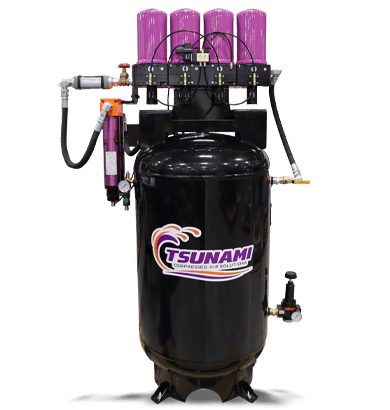DUST COLLECTION
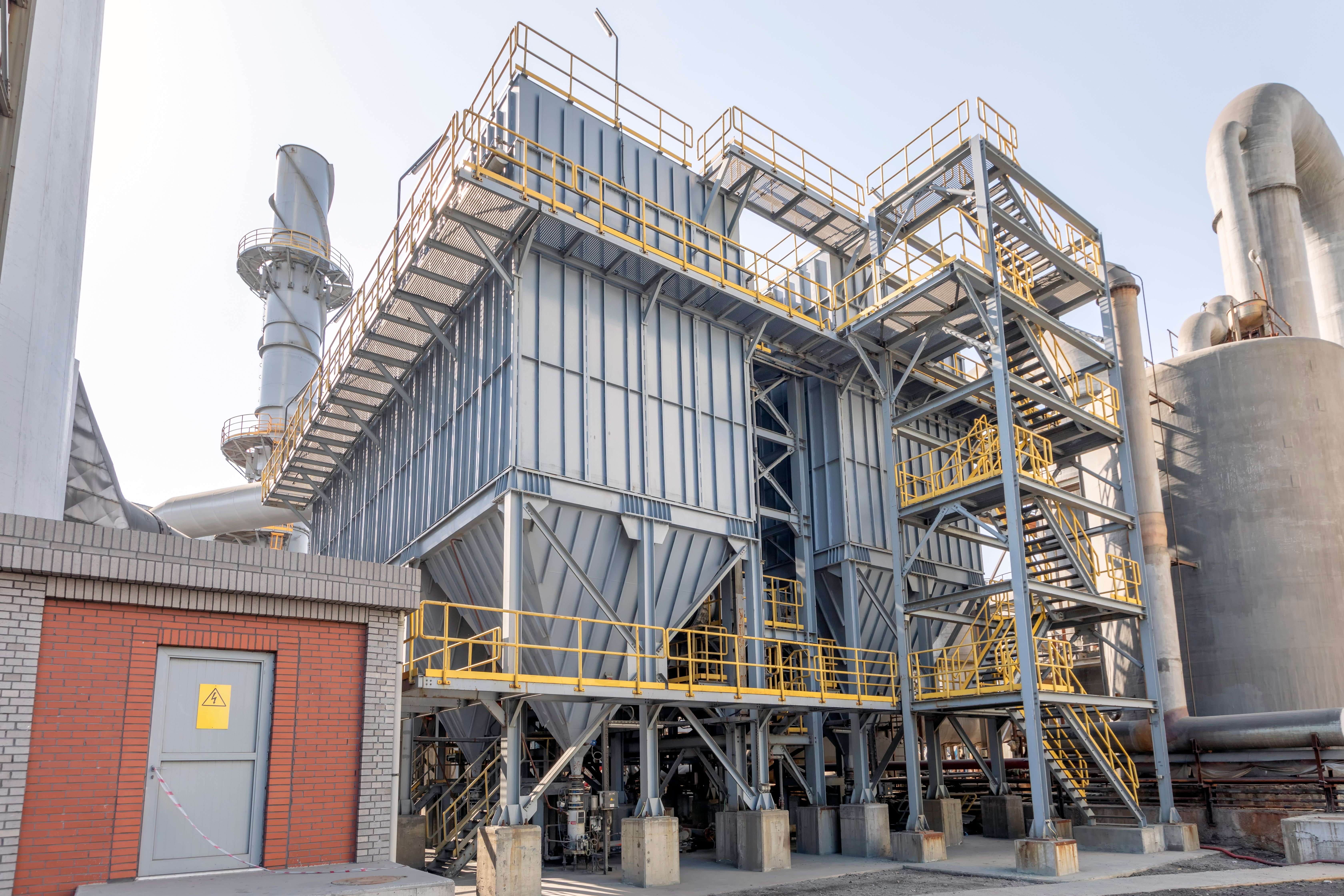
WHY DRY AIR MATTERS IN DUST COLLECTORS
It's obvious that dust collector systems play a critical role in maintaining air quality cleanliness for manufacturers. For years, plant operators have sought for any advantage to improve pulse jet cleaning in bags (sock) or reverse flow cartridge systems. The challenge faced in every dust collector application is to maximize pulse effectiveness and extend bag life while minimizing compressed air consumption. The dust collector system is optimal when the pulses effectively remove cake from the filter, returning the filter effectiveness to the point where the filter meets or exceeds the manufacturer's specification. In order to effectively remove cake, the air needs to be completely free of moisture and contaminants.
DUST COLLECTOR BEST PRACTICES
Shown in the graphics are two plumbing setups often found in facilities using dust collector systems. Setup 1 shows a regulator being used as the sole component of the system. With this setup, we often find the regulator set to the highest pressure possible because the small diameter piping (example: 1" dia) creates very high pressure drops when the valves are pulsed. Not only does this affect the efficiency of the pulse or shock wave to the collector bags or cartridges, it also causes pressure drops in the surrounding air system. This can cause further issues and reduce production on air operated equipment nearby. Without proper filtration, water, oil, and sometimes heavy fog coat the filter bags or cartridges, reducing effectiveness and shortening the bag life. Wet and oily bags will need to be pulsed more often, requiring more compressed air.
Setup 2 is a good minimum requirement to solve some problems in typical systems. Shown in the graphic are larger pipes and a filters going through a restrictor valve to limit the speed of air being replenished in the tank before the next cycle. A storage tank should be provided to allow enough cushion for pulse valves to cycle with minimum pressure drop. This will allow for a more powerful, consistent shock wave to increase efficiency. With the additional storage of air in the tank, an air regulator can be set at lower pressure downstream to reduce amount of air used per pulse. This system will still have oils and fog due to supercooling that coats the bags or cartridges which reduce efficiency and shorten life.
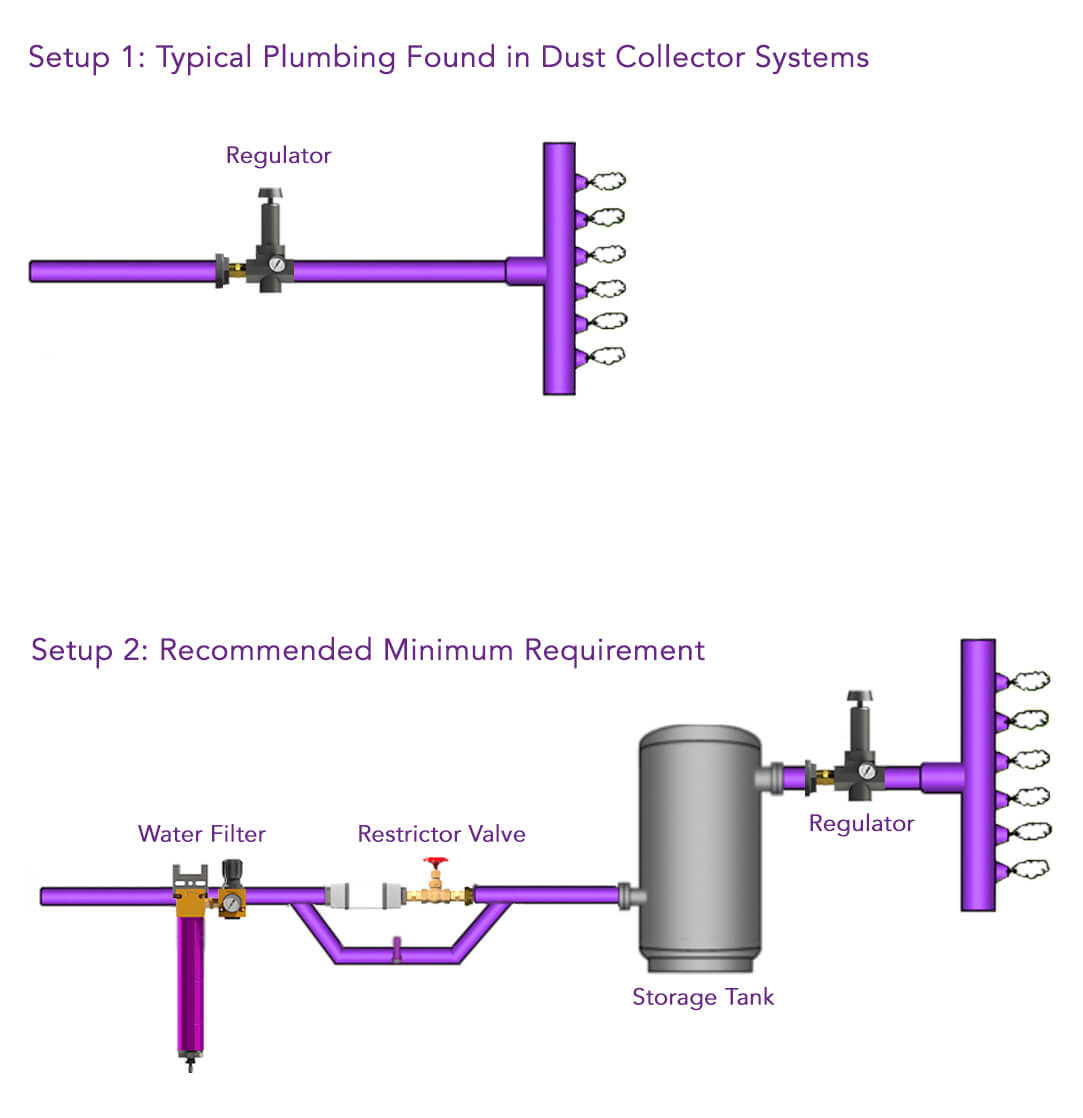
SUPERCOOLING
Supercooling is the rapid expansion of air that loses heat due to the immediate separation of molecules. Simply put, for every 20°F that air cools, it loses approximately 50% of its ability to hold moisture in the form of vapor. In collector applications, this cooling effect converts water vapor to liquid as air quickly expands out of each pulse valve. Damp air hits the bags or elements creating a wet cake substance that prematurely clogs the filter and inhibits air from passing through. Not only does this wet air reduce the life of each filter, it also wreaks havoc on collector systems in climates where freezing may occur.
Since dust collectors consume less than 30 CFM, on average, operators typically pay little attention to the quality of compressed air being supplied. Even though these collectors have low flow specifications, the actual volume of air per pulse dramatically exceeds that specification.
What happens to this high volume of air as it rapidly exhausts out the orifice of a pulse valve is the underlying issue termed supercooling; which Tsunami addresses with their bag house drying technology.
Having excess storage of ultra-dry air in dust collector applications is necessary for eliminating moisture within the system and increases the life and efficiency of the system.
THE TOTAL SOLUTION
Tsunami Compressed Air Solutions has designed an “all-in-one” regenerative air dryer to eliminate air-related issues that prevent a dust collector system from operating proficiently. The system includes both a heavy duty, low-maintenance water separator and a heavy duty oil coalescing filter to remove oil. Next is a flow control restricting valve that can be adjusted to set the flow to a minimum CFM to refill the tank before the next valve pulse. This will prevent large pressure drops that could affect nearby air operated equipment and allow for a smaller air dryer. The air then flows through the Tsunami Regenerative Dryer which removes water vapor and lowers the dew point down to -40°F, which will prevent lines from freezing outside and eliminate the fog that occurs due to supercooling. The high flow outlet regulator allows for precise pressure control which maximizes the efficiency of the drying system. This total solution drying system provides very effective pulses which will lower compressed air usage and prolong life of bags or cartridges.
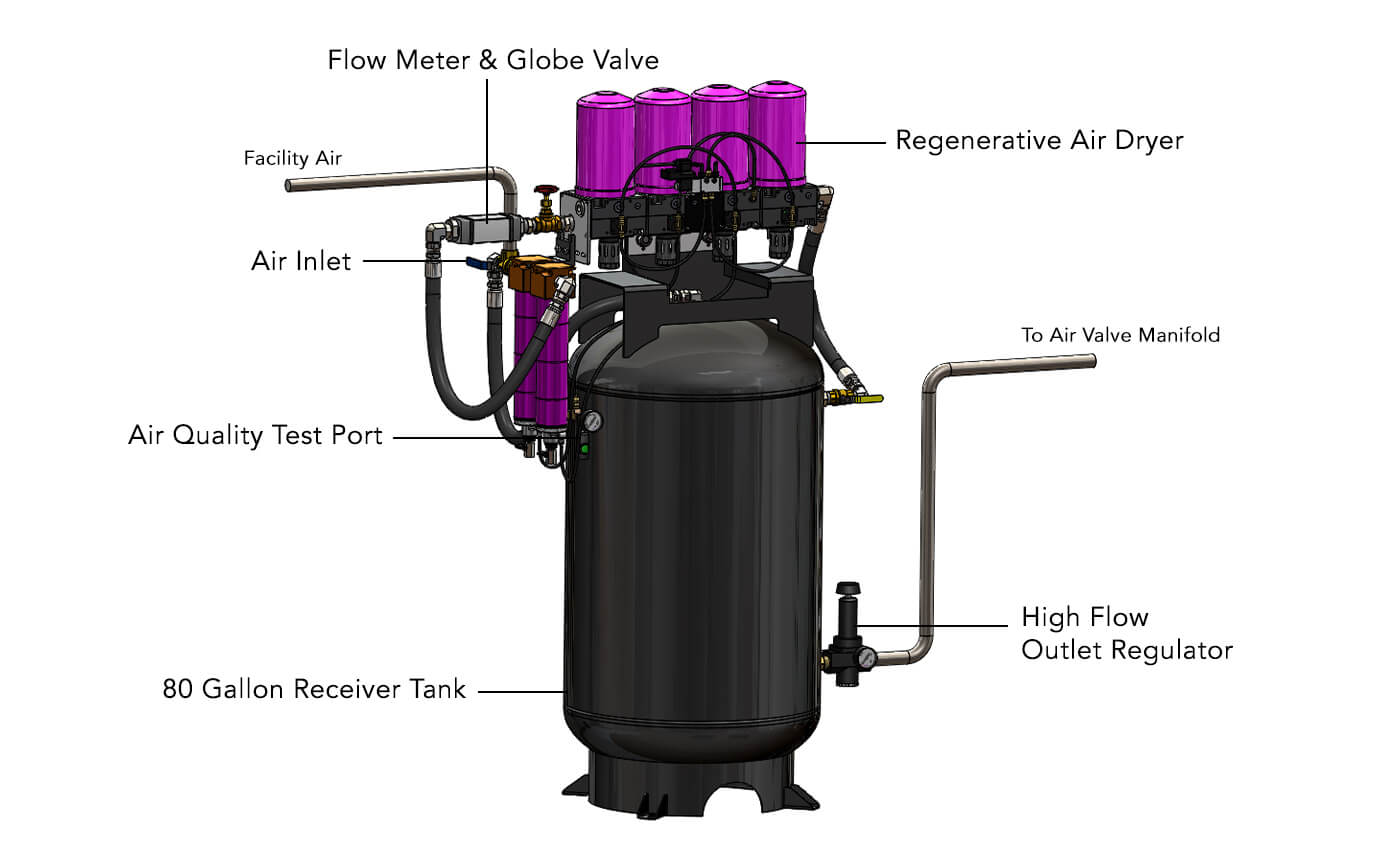
Tsunami’s world-class drying technology is configured specifically for dust collectors to offer a clean air package designed to maximize system performance and reduce operating costs like nothing before.
Increase bag life by up to 70%: Dew points down to -40°F eliminate cake build-up on bags caused by humid air and moisture from supercooling, resulting in lower differential pressure and longer bag life.
Reduce carbon footprint: More effective and less frequent pulsing saves companies thousands in generating compressed air.
Extend equipment life: Ultra dry air stops corrosion and can extend the life of pulse valves and prevents freeze up in cold environments.
Plumb and Play: Tsunami dryers are built as complete packages and come ready to plumb directly into your system.
Recent Articles
3 min read
Cycling vs Non-Cycling Refrigerated Air Dryers: What's the Difference?
Tsunami Team: Nov 7, 2025
4 min read
Understanding C1D1 Hazardous Environment Requirements and Meeting Them
Tsunami Team: Sep 3, 2025
